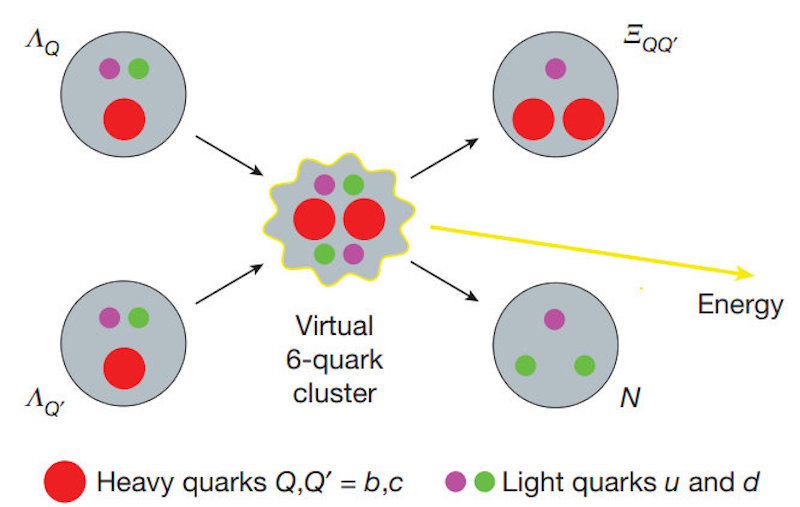 Schematic depiction of quark-level exothermic fusion reactions ΛQΛQ′ → ΞQQ′N, where Q,Q′ ∈ {b, c}. Credit: (c) Nature (2017).
Schematic depiction of quark-level exothermic fusion reactions ΛQΛQ′ → ΞQQ′N, where Q,Q′ ∈ {b, c}. Credit: (c) Nature (2017).
Nov. 6, 2017 (Phys.org) -- A pair of researchers with Tel Aviv University and the University of Chicago found evidence suggesting that fusing quarks can release much more energy than anyone thought.
In their paper published in the journal Nature, Marek Karliner and Jonathan Rosner describe their theories surrounding the amount of energy involved when various types of quarks are fused together.
To learn more about subatomic particles, researchers at the Large Hadron Collider cause atoms to move at high speeds and then smash them into one another. Doing so forces the component parts of the atoms to be disassociated from one another allowing each to be studied. Those components, scientists have found, are called quarks. Prior research has also shown that when atoms in the collider smash into each other, sometimes the pieces that come apart collide with other parts, fusing them into particles called baryons.
Prior work has suggested that energy is involved when quarks fuse together. In studying the properties of one such fusing, a doubly-charmed baryon, the researchers found that it took 130 MeV to force the quarks into such a particular configuration, but they also found that fusing the quarks together wound up releasing 12 MeV more than that. Intrigued by their finding, they quickly focused on bottom quarks, which are much heavier -- calculations showed it took 230 MeV to fuse such quarks, but doing so resulted in a net release of approximately 138 MeV, which the team calculated was approximately eight times more than the amount released during hydrogen fusion.
(more)
READ MORE: Phys.org











